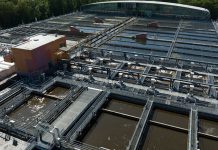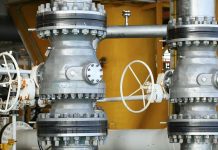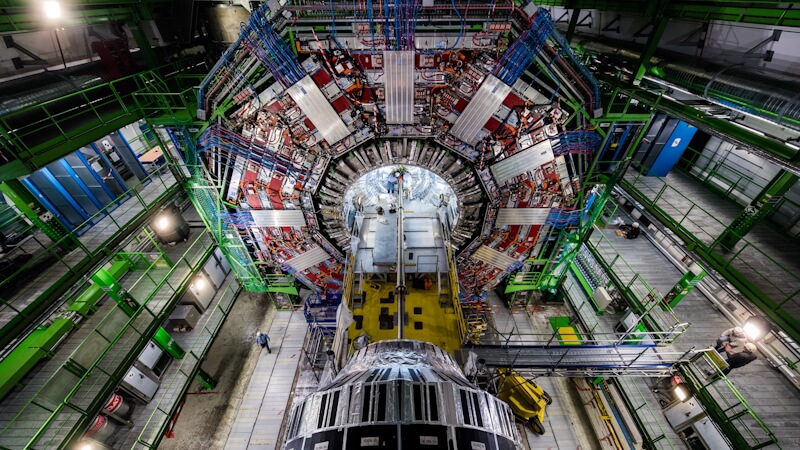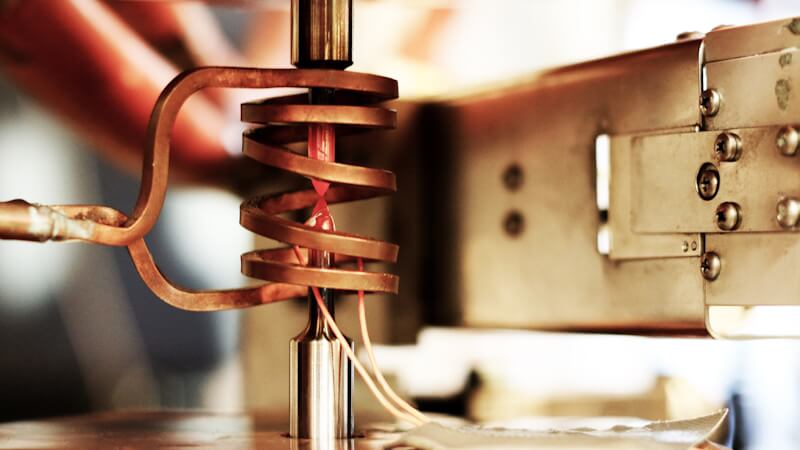Additive manufacturing is not only suitable for small and filigree structures. Gefertec manufactured a 170kg stainless steel part for the Institute of Fluid Mechanics and Hydraulic Machinery at the University of Stuttgart, resulting in both time and cost advantages for a hydroelectric project.
By Rebekka Jurtz, Sales Manager at Gefertec GmbH and Jörg Lantzsch, Journalist, Agentur Dr. Lantzsch
The increased use of hydropower is one of the building blocks on the path to the energy transition. Increasing the efficiency of hydroelectric power plants in large operating areas can make an additional contribution. A group at the University of Stuttgart is researching this field and testing fluid flow machines for hydropower technology. A key approach: the investigation of the dynamic behaviour of fluid flow machines under extreme off-design operating conditions.
A challenging geometry
IKR GmbH was commissioned with the engineering and implementation of the test stand. The company, which belongs to the ERBUD Group, specialises in piping and plant construction. However, during the procurement process, the company was confronted with prohibitive costs and long delivery times for the bellmouth intake. The long delivery time would have delayed the commissioning of the installation.
“The geometry of the component is unusual and poses a real challenge for production,” explains Tino Bock, who accompanied the project as a planner at IKR. The diameter of the bellmouth intake, which must be made of stainless steel, increases from 650 mm on the flange side to 850 mm in a continuous curve. Manufacturing this component by machining would have required a high machining volume, even if a suitably thick-walled tube were available as the starting material. It would have been an expensive and very lengthy process to procure and process the raw material.
AM as an alternative
In the search for an alternative manufacturing option, the staff at IKR investigated the possibility of having the component produced using additive manufacturing. This manufacturing technology offers an interesting alternative, particularly when demand is not predictable and the quantities required are low. Small batch sizes and components that are needed quickly are often associated with excessive costs and long delivery times in conventional production.
In general, additive manufacturing can achieve significant material savings compared to subtractive processes. And processes that can produce large components in a reasonable amount of time are now available.
“We directed our inquiry to Gefertec, which produces machines that work with Wire Arc Additive Manufacturing (WAAM),” Tino Bock reports. The Berlin-based company offers complete manufacturing systems for metal 3D printing based on this process (see text box).
The machines combine traditional gas metal arc welding with special process expertise for the additive construction of components, a robust machine system, integrative CAM software and process-related quality assurance. The robust process enables high build rates, and wire from all relevant metal alloys material is easily and inexpensively available as starting material. In additive manufacturing using WAAM, the machines manufacture a near-net-shape blank that is then given its final shape by further mechanical processing. This process is also suitable for large components of up to one cubic meter. Products suitable for manufacturing inexpensively and quickly using WAAM can be found in various industries, including mechanical engineering, plant construction, oil & gas, and the naval industry.

Feasibility study and contract manufacturing
Gefertec not only offers the machines that work using the WAAM process but can also carry out feasibility studies on the use of the process in its Application Center. The customers’ requirements are analysed in detail and then the component production is implemented on the arc machines. The fulfilment of the material and application-specific requirements are also checked.
Gefertec has five arc machines in operation. With strong technological partners such as Linde for the gas supply and voestalpine Böhler Welding Group as a supplier for the wire material, the company is well prepared for a wide range of applications.
In addition to feasibility studies, clients can also order complete components, a service that IKR used for the bellmouth intake. “The specialists from Gefertec provided us with competent support in all phases,” explains Tino Bock.
“As a result, we were always sure that we would successfully complete the project.” The benefits of the method were convincing: if the component had been machined from solid material, the semi-finished product would have weighed around 1.6 tons. With 3D printing, the near-net-shape blank weighs just 240 kilograms, resulting in material savings of more than 70%. The speed of the method was also impressive: production on the arc machine was completed in 45 hours.


3DMP® WAAM technology
Gefertec’s 3DMP® WAAM technology integrates mature arc welding technology, user-friendly CAM software and a machine tool into an industrially proven additive manufacturing solution. The arc machines designed for the WAAM process (Wire Arc Additive Manufacturing) are available as 3- and 5-axis versions in various sizes. In the largest expansion stage, with a build-up space of 3 m3, components up to 3,000 kg can be manufactured. All machines work with Siemens controls. The path planning, or in other words the CAM processing of the WAAM components, is implemented in the Siemens NX CAM software. The development partnership between Siemens and GEFERTEC enables users to have a continuous digital process chain from component preparation to AM programming, CNC post-processing and quality control, including fully integrated PLM, ERP and MES functionalities. The machine then automatically produces the near-net-shape workpiece. This makes the operation quite simple, and the machines can be optimally integrated into a production environment.
Testing according to PED
There was another challenge to overcome in the production of the bellmouth intake, as Tino Bock clarifies: “Even though the component is not pressurised, it has to go through a test according to the Pressure Equipment Directive.”
A design review, strength test, construction test and certification according to Module G of the Pressure Equipment Directive 2014/68/EU are required. As additive manufacturing with WAAM is not yet regulated in the Pressure Equipment Directive, the testing of a component manufactured using this method is also fresh territory. Schweißtechnische Lehr-und Versuchsanstalt (SLV) Halle was commissioned with the test. The procedure test was conducted according to DIN EN ISO 15614-1:2012 and AD 2000 – HP 2/1:2017 and includes, among other things, visual inspection, tensile and bending tests as well as macro/micro sections. The component manufactured by Gefertec completed the procedure tests without any problems.
Verdict: saving time and money
The project impressively shows how the specialists from Gefertec produce near-net-shape blanks in their Application Center and create a complete production concept, from printing to post-processing and material testing, and how they can implement it with the help of strong partners. Materials that are sometimes difficult to process or expensive, such as stainless steel, can be processed on the arc machines without any problems. The process is characterised by optimal component quality and faster and more cost-effective production.
In this project, the customer benefited from the possibilities of the Application Center in two respects. “In the end, the 3D printing of the component at Gefertec was not only faster but also cheaper,” says Tino Bock, summarising his positive experience. IKR GmbH considers the future production of large-volume, time- and cost-critical components using WAAM at Gefertec to be routine.
Every week we share a new Featured Story with our Stainless Steel community. Join us and let’s share your Featured Story on Stainless Steel World online and in print.








